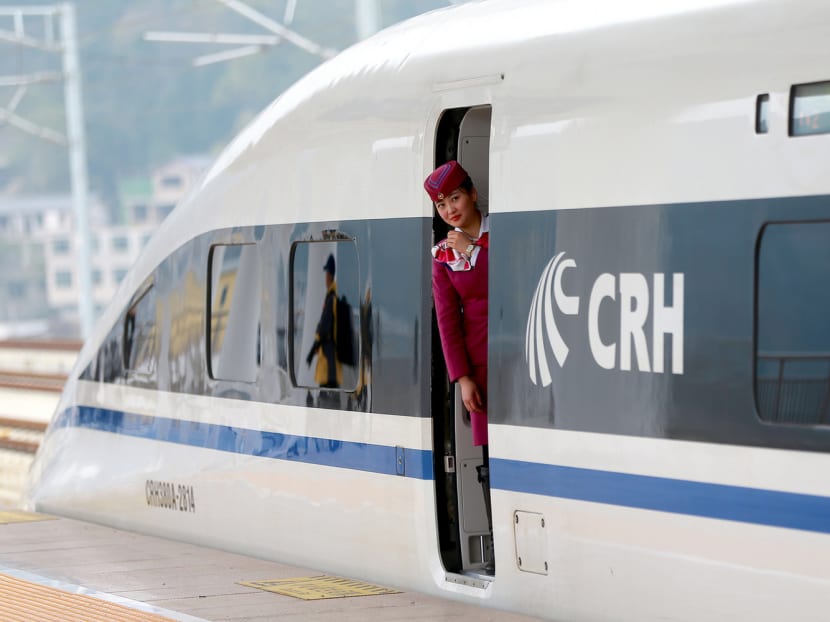Identity, staff, debt, freight issues plaguing China Railway
BEIJING — Working on the railroad was a dream for many Chinese in the 1980s, when trains were the country’s main form of transportation and offered a glamorous life of travel that was off-limits to most.

A high-speed railway train linking Shanghai and Kunming in China. State-owned railway operator CRC has a S$880 billion debt from building the nation’s high-speed-rail network. Photo: Reuters
BEIJING — Working on the railroad was a dream for many Chinese in the 1980s, when trains were the country’s main form of transportation and offered a glamorous life of travel that was off-limits to most.
But that aura has faded today, in an era when air travel is common and even ordinary people can afford holidays. The transformation has created an identity crisis for China Railway Corp (CRC), operator of the world’s biggest rail system, which also includes a top high-speed-rail network.
The state-owned operator is plagued by a bloated payroll of two million employees and the inability to quickly roll out new products to capture market demand and generate new revenue. Adding further baggage to the company is a culture lacking transparency and a series of accidents. Falling freight traffic is also concern as demand for bulk commodities slides with China’s slowing economy. At the same time, the company is saddled with 4.3 trillion yuan (S$880 billion) debt from building the nation’s high-speed rail network, now 22,000km long and set to keep growing over the next five years.
“The largest challenges CRC faces now are the increasing debt and declining freight traffic,” said Mr Zhao Jian, director of China Urban Research Centre at Beijing Jiaotong University. “All new rail projects are high-speed ones, which cost a lot. But the revenue so far can’t even cover the interest of the loans.”
One of CRC’s biggest challenges lies in freight services, often the biggest revenue contributor for many rail operators. That was once true for CRC, but the situation has shifted sharply during the past two years due to weak demand from miners and other bulk item haulers as China’s economy slows.
CRC’s freight income fell behind passenger revenue for the first time in 2015, and the gap grew last year to 64 billion yuan. Freight revenue dropped in 2015 by 10 per cent and was down an even-sharper 12 per cent in the first three quarters of last year.
CRC has tried to offset the slowdown by offering transport services for higher value-added goods, such as electronics. But bureaucracy and its inability to provide modern logistics services have hampered that effort.
Meanwhile, a new generation of privately owned transport and logistics companies such as SF Express have been more than happy to fill the gap.
CRC took its current form in 2013, as the operational arm of China’s railroad network after the Ministry of Railways was split into two. But its lack of experience as a commercial entity has made it slow to adapt to unexpected market changes.
As new revenue sources are slow to take off, a more-promising funding avenue could come from private investors looking to participate in new project construction. CRC was allowed to accept private investment from 2005, and the central government has issued documents supporting private capital entering the monopolised sector. But progress has been slow due to a shortage of projects for CRC and other rail operators.
Safety has also been an issue for the operator, especially after the 2011 high-speed train crash in south-east Zhejiang province that killed 40 people. The now-defunct Railways Ministry released a detailed investigation in that case. But CRC is far less forthcoming more often. Many accidents that injured or killed rail workers were never made public before, as the ministry ran a separate judicial system. CAIXIN ONLINE






